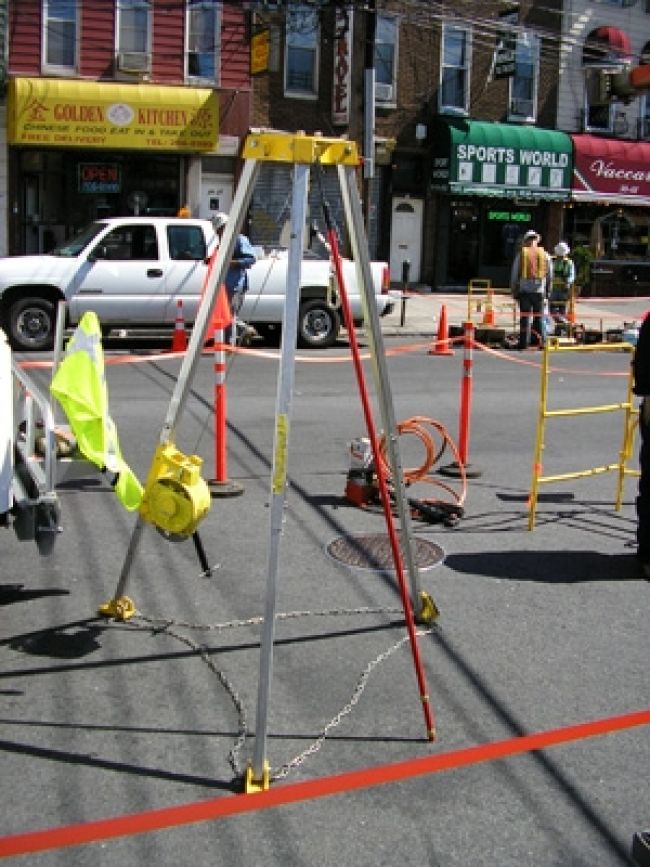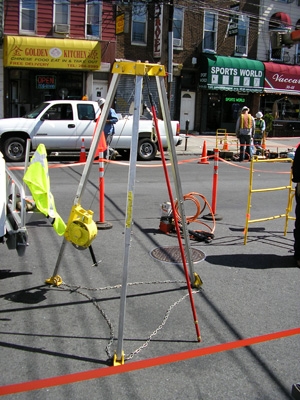
The Power of an Effective Field Observation Program

Electric utilities are among the most hazardous industries in which to work. This was recognized in the early days of electric power distribution when extremely high fatality rates occurred. Since those days, utilities have examined injuries and fatalities to learn how to prevent others. The examination process has included analyzing possible hazards, mitigating the identified hazards to a safe level of acceptable risk, creating policies and procedures, developing and providing protective equipment, and making the workplace as safe as it can be … or has it? Unless we make a conscious effort to verify that what has been developed and provided is used properly, safe work practices can only be assumed. By conducting field personnel work site observations on a consistent basis, we can substantiate and measure the effectiveness of organizational safety efforts, proving that the “safety first” culture is accurately represented.
Conducting field observations enables the organization to take a firsthand look at work methods, allows the organization to document employees as they demonstrate their knowledge and ability to work safely, and also sends a message to employees that the company cares about their safety. To effectively conduct a work site observation, plan on being there for no less than one hour. If more than one crew is present, two to three hours may be necessary.
Why Perform Work Site Observations?
When a new employee starts, they likely will go through some level of orientation to understand the company’s benefits and learn what is expected of them. The company usually provides them with a safety manual and company-provided tools. Once the apprenticeship or training period is completed, the only additional formal training the employee may get is some type of regular safety training. In 29 CFR 1910.269(a)(2)(iii), OSHA states that “[t]he employer shall determine, through regular supervision and through inspections conducted on at least an annual basis, that each employee is complying with the safety-related work practices required by this section.”
This is in itself justifies and even mandates the need to conduct work site observations. All field personnel who work with electrical equipment should be part of the program, including meter personnel, power plant operators, lineworkers, substation electricians and relay technicians. Other benefits of performing observations include identifying training deficiencies, policy or procedure deficiencies, equipment deficiencies, safe work practices and if the company has a healthy safety culture.
Preparing for the Observation Program
Before starting an observation program, it’s important that there is buy-in from the top. Regularly take the CEO and other senior management personnel on field observations. As they enter the work zone, be sure they understand the PPE requirements such as steel-toe boots, work zone vests, hard hats and safety glasses. This will support acceptance of the PPE requirements and the observation program by field personnel, and may help change or strengthen the organization’s safety culture.
Another important consideration before you begin an observation program is to look at the company’s corrective action policy. If you have a policy that states that a letter of reprimand is to be written for any safety infraction, it will be tough to get the program off the ground. You may need to negotiate a new policy or an addendum to the existing policy to allow for coaching for minor infractions. Life-threatening violations will need to be addressed more firmly. The key to corrective action is that it should be consistent. It also is important to provide plenty of positive feedback for good, safe work practices. Once the observation is done, share the score with all field personnel and emphasize the good work practices. This will foster future safe work practices, thereby improving the safety culture.
Observation Format and Scoring
The form and format of the observation have to be well-developed. It should have a scoring system that is as objective as possible to prevent inconsistencies among the various supervisors conducting the observations, such as a simple checklist that won’t take much time away from viewing the work that is happening. Electronic versions that can be downloaded to smartphones work OK, but are sometimes difficult to see in the sunlight and take time away from the observation.
The outcome of an observation should be measurable and quantifiable. Separate the observation into parts such as tools and equipment, PPE and work practices. By measuring these items separately, it will help you to directly target deficiencies and develop a means to correct them both efficiently and effectively. The scoring system should be weighted according to the level of risk (e.g., 1 for minor risk, 3 for moderate risk and 10 for major risk). Of course, if a high-risk hazard associated with unsafe work practices is identified, the job should immediately be shut down. Once you’ve tallied the score for infractions, deduct it from 100. This is a system that is understandable by everyone. Typically, a score of 90-100 is very good, 80-90 is good, 70-80 will need some work and 60-70 indicates a condition that should be addressed as soon as possible. A score under 60 requires an immediate safety shutdown.
The following example of a work practice deficiency was observed in a real-life incident. An apprentice lineworker, armed with a digger bar, was seen trying to free up a pole butt where an old pole had been removed to approximately 4 feet off the ground. While the apprentice was digging, a digger-derrick operator was unsuccessfully attempting to pull the pole butt using the winch line with a choker connection on the pole. These two actions prompted an immediate shutdown. If the pole had suddenly been released, the tension could have caused the pole butt – which likely weighed about 200 pounds –to fly up and spring back, striking the apprentice. Or, if the winch line failed, the line could have seriously injured him. The corrective actions following the shutdown were to purchase the proper tools to pull the butt and to properly train employees.
Who Performs the Observations?
Work site observations are best done by operations supervisors and, on occasion, their managers. Observations should include spot checks from the safety managers or neutral, qualified designees who don’t work directly with the managers or those being observed. Safety management should facilitate the program, but should not conduct all personnel observations. When supervisors perform observations in the field, it provides them with time to connect with field personnel and also gives them an opportunity to praise field personnel for the safe work practices identified.
In order to be consistent, those assigned to perform field observations should be trained on how to conduct the observations, including:
• What actions, equipment, PPE and work practices to look for.
• How to implement corrective action and coaching when infractions are identified.
• Methods of rewarding safe work practices.
• How to deal with different types of personalities.
• How to score observations while in the field through proper understanding of the probability/severity matrix.
Taking digital photos throughout the observation process may be beneficial. These can be used at a later time for training. It is important to note that photos used against an employee for violations would be extremely detrimental to the program, so try to use caution with the type of pictures taken and when and where you use them.
If infractions or deficiencies are related to behavior, take immediate corrective action via a verbal one-on-one conversation, but never in front of other employees.
Tracking and Trending
After the observation is finished, it should be input into a tracking system that provides reporting capabilities. This may be developed by the safety department, or they may purchase a commercial program. Reports generated from the tracking system can provide valuable information to show upper management and regulatory agencies the effectiveness of the company safety program. The system should have the capability to measure leading indicators or to identify unsafe trends to help target risk areas. The results (leading indicators) also may be used as an incentive program to promote safe work practices, but be careful not to tie incentives to OSHA rates (lagging indicators) as OSHA frowns upon this practice.
Summary
Field observations are required by OSHA, but more importantly, they are a valuable tool companies can use to determine if their training is effective, tools and equipment are adequate, and the safety culture is at the level it should be. If done properly, this process is more powerful than any classroom training and provides a solid foundation for an exemplary safety culture.
About the Author: Lee Marchessault, CUSP, is the president of Workplace Safety Solutions. He is a licensed electrician with 35 years of experience in the electric utility industry, both in the field and as an EHS manager. Marchessault also is an adjunct instructor at Keene State College and has developed electrical safety programs for OSHA Training Institute Education Center Region 1. In addition to authoring numerous articles and speaking about electrical safety in the U.S. and abroad, Marchessault is an active member of the NFPA, ASSE, IEEE and National Safety Council Utilities Division.

